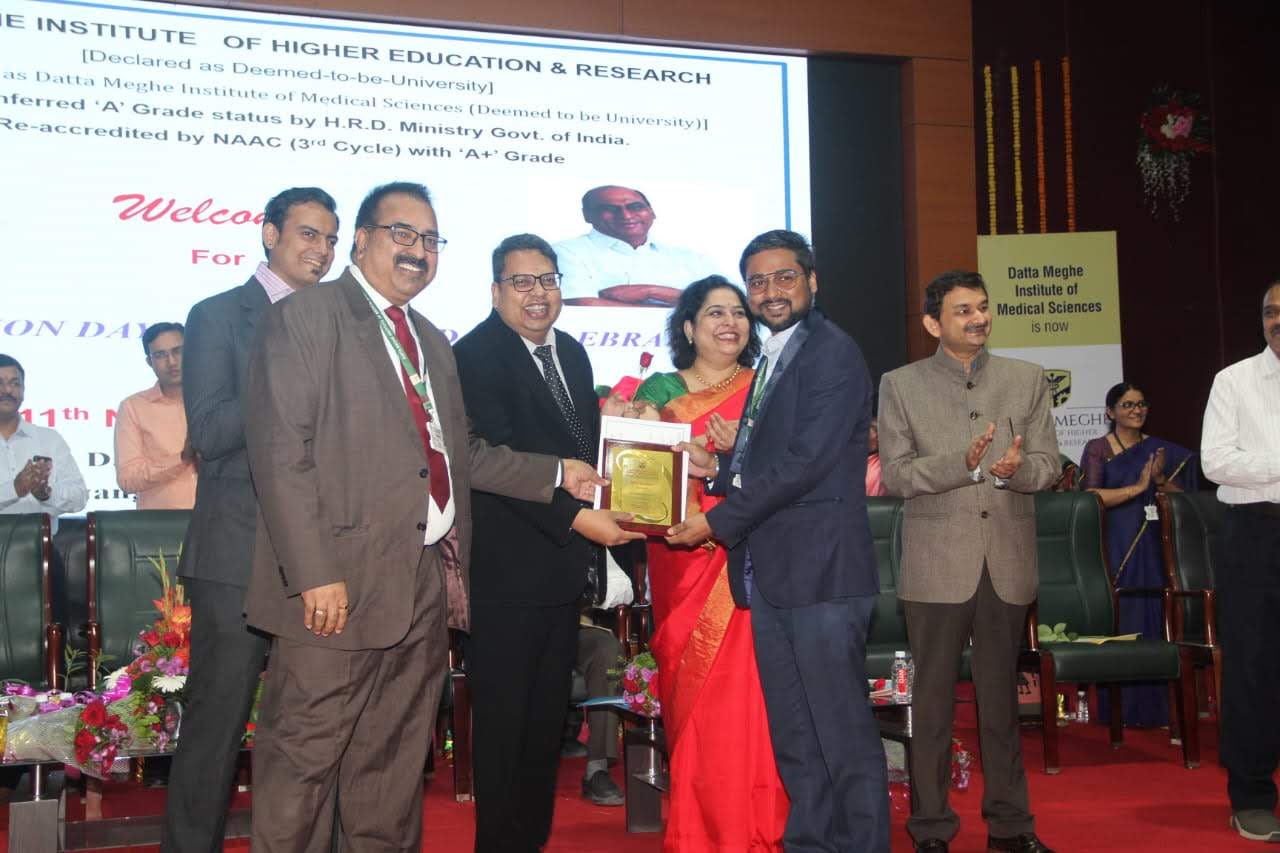Gaurav Srivastav
@sharda.ac.in
ARTIFICIAL INTELLIGENCE
SHARDA UNIVERSITY
Profile: Academic:7 Years. Industry: 2 Years. Total: 9 Y; 11 Papers+ 08 FDPs+
3 Expert talks + 3 courses organized + 2 Patent+1 Book Chapter (Scopus papers
05) Total: 28
EDUCATION
Sl.
No Examination Passed Year Name of the
Board/Universit
y
Division
/Grade % Of
marks
1 PhD (Thesis Submitted-CSE) 2022 Sharda University - Thesis
Submitted
2 M. Tech (CSE) 2015 Sharda University
3 B. Tech (IT) 2011 UPTU, Lucknow
5 10+2 2007
6 Secondary exams 2005
RESEARCH INTERESTS
MACHINE LEARNING, DEEP LEARNING, NLP
Scopus Publications
Scholar Citations
Scholar h-index
Scholar i10-index
Scopus Publications
Bhushan Fulkar, Pawan Patil, Gaurav Srivastav, and Promod Mahale
IEEE
Efficient allocation of resources and timely agricultural interventions depend on the precise identification of crop loss at the field parcel level. Using recent data from 2018 to 2023, this study investigates the integration of deep learning techniques with real-time field photography to classify agricultural field parcels into those experiencing crop loss and those not. We build and assess deep learning models specifically for crop loss classification using a dataset from the Finnish Food Authority (FFA) that combines on-the-ground photos taken during field visits with comprehensive field parcel information. In this work, we use convolutional neural networks (CNNs) to examine the visual characteristics that we have extracted from field photos in order to identify the subtleties that may indicate crop health or possible loss. Our goal is to improve the model's generalization capabilities over a variety of crop types and agricultural landscapes by training it on a combination of field parcel data and corresponding photographs.
Gaurav Srivastav, Shri Kant, Durgesh Srivastava, Neha Sharma, and Yu-Chen Hu
Springer Science and Business Media LLC
Gaurav Srivastav, Shri Kant, Durgesh Srivastava, and Satvik Vats
IEEE
Nowadays, one of the most intriguing fields of research in information technology is artificial intelligence (AI) and machine learning (ML). For educational researchers and scientists, it offers an excellent prospect. Since education practitioners have little awareness about utilizing AI in the educational system (AIEd), it is, therefore, a promising field of research for improving the quality of educational practices. This study aims to investigate AI-ML to create an AI-enabled educational eco-system. Researchers have expressed interest in using educational data mining and the data science approach to find patterns in extensive educational data collections. This study demonstrates how intelligent applications based on AI can be used to improve teaching and learning.
Richa Singh, Gaurav Srivastav, Rekha Kashyap, and Satvik Vats
IEEE
Intelligent network orchestration and management are crucial components of the 6G network. Therefore, machine learning and artificial intelligence play a big part in the 6G paradigm that is being imagined. However, the combination of 6G and AIML utilization may frequently be a double-edged sword because AI has the capacity to either protect or compromise security and privacy. Proactive threat detection, the use of mitigating intelligent techniques, and network automation in future are needed to enable the achievement of independent networks in 6G. As a result, this paper has detailed focus on the ongoing projects based on 6G and factors that make 6G technology necessary. The role of ZT architecture is discussed in detail, use of AIML in 6G, Various application areas and challenges associated in 6G has been mentioned in this paper.
Gaurav Srivastav and Richa Singh
AIP Publishing
Gaurav Srivastav, Mamoon Rashid, Richa Singh, Anita Gehlot, and Neha Sharma
IEEE
Breast cancer is one of the most common cancer types. This is the second-leading cause of cancer-related death in women. It ranked 2nd according to available data lung cancers is the only one causing more causalities. It’s critical to receive a breast cancer diagnosis quickly. The MIAS data set is used in this study to examine machine learning-based categorization approaches used to study breast cancer. Important image data is fetched from mammograms. We choose eight distinct classifiers and assess each one’s precision, recall, accuracy, and F-score. The analysis’s findings were higher than 69.88%.
Pramod Vishwakarma, Vijay Kumar Soni, Gaurav Srivastav, and Abhishek Jain
Wiley
Richa Singh and Gaurav Srivastav
IEEE
There are various deep learning-based IDS techniques are implemented in large scale. Intrusion detection systems are critical components for protecting ICT infrastructure (IDSs). Keeping this in mind, solid solution is required for different types of new attacks and complexity control. Deep learning and machine learning is widely used to handle high dimensional, complex type data. The IDS detects and attracts various attack types such as known, unknown, and zero-day attacks using unsupervised machine learning techniques. To detect threats without prior knowledge, a framework has been designed that uses the concept of One Class SVM (OCSVM) and active learning. The CIC-IDS2017 dataset was used to test the performance of the framework and compare the result with UNSW-NB15 and KDD cup 99 dataset. The final output shows that this framework gives better performance than other.
Mahima Sharma and Gaurav Srivastav
Springer Singapore
Gaurav Srivastav and Shri Kant
IEEE
Internet has open platforms for various domains to interact with each other. e-leaning is a domain which consistently getting attention because of “Learn any-time, anywhere” approach. Since, the start of e-learning environment development phase semantic web base ontology is used for describing and making relation between Learning Objects (LO's). Since contents are increasing every day, on this point ontologies are lagging to recommend. Development of recommendation using deep learning techniques are producing comparatively better results. Deep learning is now been used for classification, predictions, recommendations. It is also used in detection and segmentation techniques as well. This paper presents discussion various categories of recommendation systems. Then a comparative study is on deep learning-based recommendation systems. Major challenge that an e-learning environment is facing is because of “Cold-Start” and “Sparsity” in content based (CB) & collaborative Filter (CF) based recommendation systems. How to reduce Cold-Start and Sparsity is tried to find out in this paper.

